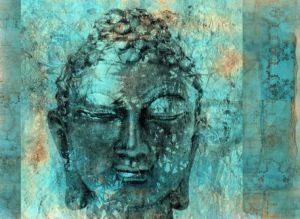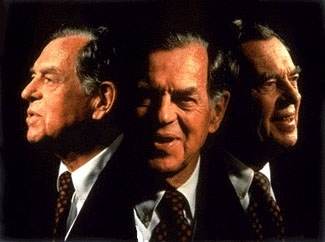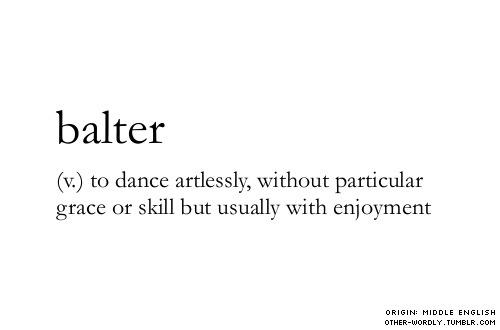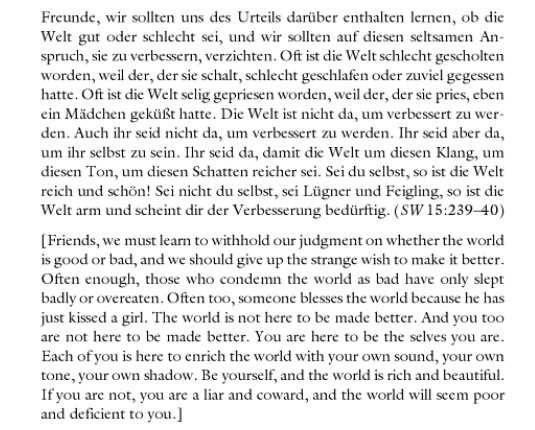The Buddha’s One Noble Truth?
Posted: August 23, 2014 Filed under: Basics, Living in Truthless Truth | Tags: accept, Advaita, Archie J. Bahm, buddha, desire, ego, Eightfold Path, enlightenment, karma, Koan, nirvana, Noble Truths, philosophy, Reincarnation, Samadhi, samsara, soul, suffering, surrender, truth, zen 9 CommentsIn his 1958 classic “The Philosophy of the Buddha” Prof. Archie J. Bahm analyses the most ancient Buddhist scriptures (“Sutta” and “Vinaya Pitakas”) and suggests that during his 40 year career as a teacher the Buddha only taught one single universal Truth: unfullfilled desire causes frustration and the rejection of frustration is the source of suffering. According to Bahm, all other teachings including the “Four Noble Truths” and the “Eightfold Path” must have been later added to the philosophy by “other minds” due to misunderstandings of what the Buddha was trying to convey.
Now, you may ask, what is so hard to understand about the fact that unfulfilled desire causes suffering? By digging into the problem of desire more closely one easily understands why.
If the cause of suffering is unfulfilled desire, the solution to the problem must be to stop desiring. Simple as that. Simple? Not quite. Basically there are two ways of stopping desire: one either gets out of sight of the objects of desire (seclusion) or one tries to beat desire (asceticism). However, neither of these two approaches really work as the Buddha found out for himself during his pre-enlightment spiritual seeking. On the one hand, some basic desires such as food and sex are not extinguishable as long as one is still human. On the other hand, the desire to stop desiring is still a desire, just a more subtle form of it. So, it is impossible to willingly not desire, because that would be a desire! Furthermore one could argue that stop desiring is not even really desirable as desires provide motivation and fulfilled desires provide satisfaction. By creating emotions, desires are life-affirming.
So desire, when not fulfilled, provides frustration. Stopping desire, though, is life-negating and actually impossible. Not so simple, is it? This is were the genius of the Buddha comes in. He discovered the “Middle Way” between desiring and desiring not to desire. Here is how it goes: if we always desired exactly what we are getting, we would always get satisfaction and the sensation of being alive. Or in other words, if we always accepted everything AS IT IS (within and without), which includes the suffering, we would be free from suffering and live in joy.
Hold on, you may say, how can one accept everything without desiring to accept everything? Of course you are right, accepting without desiring to accept is impossible. Whenever you want something, you desire it, and since trying to not want is also a desire, the attempt will cause endless frustration and suffering. It’s like trying to relax a muscle by forcing it to relax. It just won’t work.
Nevertheless, there is a way the get into the “Middle Way”. It’s a paradoxical way, though. Once the desire to get into the “Middle Way” (or any other desired state) is completely broken, one automatically falls into it. Again, because this “break” cannot directly be achieved by will-power, the way “there” is to either completely exhaust the will to get “there” by trying as sincerely and forcefully as possible (remember the Buddha had his sudden enlightenment at the moment of renouncing 7 years of hard-core asceticism!) or by thoroughly realising by other means that the YOU has no power or control over the process of accepting or desiring. The former way is nowadays practised in Zen (e.g. with “koans”), the latter in Advaita (“SELF-realization” aka “there is no YOU”). Both, the exhaustion of the will or “Self-realization”, leads to a surrender to WHAT IS, which paradoxically, yields exactly what one was desiring to get but what one actually prevented from getting by the very desiring (or desiring to not desire) to get it!
Now, to make the long story short, the surrendering to Samsara (the world AS IS) is the way to Nirvana (desiring WHAT IS). Samadhi is the complete willingness to accept the actual as the ideal. The crux, though, is that surrendering cannot be achieved by the individual (“ego”), one has to be pushed into it, as it were, by some sort of grace in the form of will-undermining insight(s).
Finally, why does Prof. Bahm conclude that this is the only Truth that the Buddha taught? First of all, the Buddha was concerned with one thing only: the cessation of suffering. According to the records he stated this very clearly. Then he discovered that the only solution to the problem of suffering lies in surrendering to the present moment (WHAT IS). So, everything that was not concerned with the present moment like concepts of the past (e.g. “karma”) or the future (e.g. “reincarnation”) or any other metaphysical speculation (e.g. the question of the “soul”) he did not deem helpful for solving the problem of suffering. Therefore in the ancient texts the Buddha never answered any questions of that sort. He neither denied nor affirmed these concepts. For the Buddha in the oldest scriptures, the existence or non-existence of metaphysical entities and ideas simply did not change the fact that to end suffering one had to come to surrender to whatever IS in this very moment no matter what the cause or effect of this present moment was. By implication, this also means that as long as one’s ideas lead one to align one’s desires with WHAT IS, any “Truth” would be as good as another.
For the very same reason the Buddha also refrained from stating anything idealistic or from proclaiming any sort of higher virtues (e.g. he never idealised a monastic lifestyle or compassion). Whatever IS is to be surrendered to to end suffering. That is the full story of the teaching in the old texts. All else, including all methods and “Paths”, must have been added later by disciples not fully understanding the full depth of “whatever IS” (on the other hand, though, one could easily conclude, that all Buddhist methods and concepts must have been created to completely frustrate the seeker and/or make him experience his lack of power to get to Nirvana in order to bring him to the very brink of it).
Additional personal note: the old-school philosophy of Buddha portrayed here can be criticised for the lack of moral outrage at the obvious evils like cruelty in the world. If one, for some reason or other, though, cannot surrender to the present-moment because of its monstrosity, and suffers as a result of it, one could still surrender to the non-surrender and the suffering, and therefore transcend the suffering. Hence, accepting “whatever IS” is not fatalistic. One can have an (unfulfillable) desire for a world without cruelty and not suffer, if (s)he can surrender to the frustration of this unfulfilled desire.
This little conundrum also explains the difference between before and after getting into “surrendering-mode”. “Before” one suffers over one’s frustration and because of that one starts suffering over the suffering, and suffering of the suffering over the suffering, etc. Suffering creates a downward spiral, a grip, if not surrendered to. “After” one may be frustrated (because of one’s unfulfilled desire) but one does not suffer over the frustration because the frustration is accepted. The spiral of suffering stops right there.
Furthermore, allthough I think that many of our desires actually stem from our fears and insecurities I see the Buddha’s point in not being concerned with the causes of desire, as the causes could be indefinite. Instead he went right to the immediate solution: accepting whatever IS includes one’s suffering caused by one’s fears. Quite smart the guy…

The Lessons of the Tao
Posted: August 14, 2014 Filed under: Living in Truthless Truth | Tags: peace, tao, zen 2 CommentsReaders of this blog know that I’ve been studying Taoism and Zen for quite some time within and without. This time I would like to share the three main practical lessons I learnt from all my studying and observing.
Lesson #1: Life is a roller-coaster
If you observe yourself, your mind and your emotional states for a while you will notice that there never is a “high” that has not been preceded by some sort of “low” some time before (and vice versa). In any cycle, the lower you go, the higher you can get. The explanation for this is very simple: the longer you stay in the dark, the more intense any sort of light will be because our consciousness is very sensitive to contrasts.
If you agree that this rule holds true, then you will easily realise that you cannot always stay “high” (or happy or you name it). When you are bathed in the light, your consciousness will start to get used to it and literarily overlook it. And so the light will eventually be as blinding as the dark.
So the lesson is that there is no use denying or resisting the roller-coaster nature of life. The fools try and thus make the roller-coaster experience dreadful. But the wise develop a flip-flopability, which is the ability to not minding the ups and downs, highs and lows because they know that they constitute life. Without going through the motions, there’s no life! Therefore, they enjoy the ride, like we enjoy the actually roller-coasters.
Lesson #2: Life is two-sided
All actions and decisions have (subjective) pro’s and con’s. There is no such thing as an “ideal” action or decision. Think all your actions and decisions humbly and honestly through to the very end and you will realise the same.
The fools keep looking for the “optimal” or “ideal” life, which only exits because they suppress the con’s of their own actions. Instead they blame others for all miseries in the world and grow hatred in their hearts. They start fights, revolutions and wars.
The wise who know that every coin has two sides, leave others in peace. They kill “the Buddha when they see him” as they know that they themselves create harm too. They focus on the pro’s of other people’s actions and are thus more compassionate with them when dealing with the con’s. Thus they approach problems and frictions with others in a positive rather than a negative way.
Lesson #3: Life is a balancing-act
The world is impermanent. This is plain obvious. Life is the same: it is always changing because of its roller-coaster nature and its two-sidedness. We are forever going up and down, in and out and balance between the pairs of opposites. The way to find peace in this turmoil is simple: full embrace of the “catastrophe” that is life. Nirvana is Samsara fully embraced. The difficulty, though, is that we cannot want to embrace. Embrace is something that happens automatically when we do not resist life anymore. The reason we are not in Nirvana is that we are afraid of letting go into it. Thus we hold on and get dragged along instead of flowing along. So the spiritual discipline is to lose our fears and trust in life as it presents itself in all its glory and all its horrors. Say YES to life unconditionally and it will shout back at you and bestow you with peace of mind.
Encore: Lesson #4: Check your motivation
From time to time check why you are seeking out for and reading stuff like this. Do you want to get “high”? Are you trying to find a solution to your problems? Are you looking for some relief or hope? If that’s the case, something inside of you resists life (that is, what is happening right now). Enquire: what is wrong with “now”? You’ll eventually find out that the only thing that is “wrong” is that you think something is “wrong” because you are afraid of life.
That’s my 50cts. Thank you for reading.

Two-Level Game
Posted: June 24, 2014 Filed under: Basics, Living in Truthless Truth | Tags: existence, human, suffering, THAT 8 CommentsWhen man awakes to the most obvious fact, that his innermost being is identical with the outer world, he adds a paradox to his existence. If he is verily all THAT, who or what is this “self” that seems so real and different from “other”? In trying to cope with this paradox the first reflex of almost all “awakened” one’s is to opt to replace their identification with “self” with an identification with THAT (thereby categorically discrediting the usual sense of self as unreal). In this phase, when one has tasted “heaven” earth seems as far away than ever and not a desireable place to return to. On the other hand, however, as the usual sense of self does not vanish and one does not miraculously dissolve into THAT, this bias creates confusion and therefore a sense of division and lack. This is the time, thus, when one needs to be introduced to the two level game.
For the sake of illustration let’s call level one the identification with “self” and level two the identification with THAT. Playing only at level one results in a life spiced with anxiety and fear about one’s existence (and obviously with their derivatives like sadness, restlessness, ambition, passion, etc). The more you get into level one, the more existence feels like a roller-coaster. Given its main motivator is fear (and its little brother desire), level one is active by nature. It’s quite a ride. It can be overwhelming, it’s messy but its juicy.
Playing only at level two leads to a somewhat watered down life of indifference with its derivatives sobriety and calmness. The more you get into level two the more passive and geological (as opposed to biological) existence will feel like. For those with (too) intense level one experiences, level two sounds like the perfect refuge (and I strongly suspect that the trying to cop-out from level one is the main reason for level two seeking in spiritual circles).
Give that each level lacks aspects of what the other level offers, the trick of the human game is to play at both levels at the same time. But how to?
As hinted at already, the answer lies in what one identifies himself with. This is where paradoxical thinking is needed. If we can think of ourselves as both humans and THAT we are there already. The spiritual traditions of the East did (and still do) a good job in creating images that can hold this paradox together. I like to think that we are all THAT (or “God”) deliberatly disguised as human beings for the sake of going through the motions of life. Level one means we forgot the THAT (“God”) part. Level two means we reject the human part. To be a whole (“holy”) human being who wants to live as much as it does not care to die, we need to play at both levels. When the levels meet (or in Hindu terminology when the lower three chakras and the upper three chakras are open simultaneously) then, in a sort of alchemistic symbiosis, another level opens (the middle or heart chakra) and with it clarity, equinamity, gratitude, serenity and compassion. These are the secret ingredients to an interesting ride (which per definition never is, and never ought to be, a smooth ride!) whereby life is lived for life’s sake, simply to maximize the joy of being alive.
To play at both levels is forever a balancing act: with the head in the clouds and the feet on the ground. Sometimes it is necessary to stick our heads a bit more often into the clouds, then again comes the time to ground ourselves a bit more. For balancing is like dancing, it knows no final resting place.
The Void
Posted: March 27, 2014 Filed under: Uncategorized | Tags: duality, middle way, mind, opposits, tao, void Leave a commentWhenever you think “such is THIS” or “such is THAT”,
You are leaving the middle way.
All conceptual thoughts are intimately connected to their opposite,
And so all thinking is biased by default.
To get attached to thought is to lose the balance;
And to lose the balance is to disalign with Tao, the way of nature.
To remain in thought is to be caught in the dualistic web of the mind;
Forever Yin is emphasized over Yang, and Yang is emphasized over Yin.
There is no way out of this, for “out” is just another thought;
To transcend thought simply cease to take sides.
We cannot help but to think,
But believing one’s thoughts to the point of attachment is a choice.
By dropping out of “this” or “that” we gain our liberty;
By letting go of all fixed ideas about self and other we fall into grace.
Are you ready to pass through this “void”?
The promise is that it is filled with abundance.
Nietzsche’s “Three Transformations”
Posted: February 15, 2014 Filed under: Uncategorized 1 Comment“In a kind of parable, Nietzsche describes what he calls the three transformations of the spirit. The first is that of the camel, of childhood and youth. The camel gets down on his knees and says, “Put a load on me.” This is the season for obedience, receiving instruction and the information your society requires of you in order to live a responsible life.
But when the camel is well loaded, it struggles to its feet and runs out into the desert, where it is transformed into a lion — the heavier the load that had been carried, the stronger the lion will be. Now, the task of the lion is to kill a dragon, and the name of the dragon is “Thou shalt.” On every scale of this scaly beast, a “thou shalt” is imprinted: some from four thousand years ago; others from this morning’s headlines. Whereas the camel, the child, had to submit to the “thou shalts,” the lion, the youth, is to throw them off and come to his own realization.
And so, when the dragon is thoroughly dead, with all its “thou shalts” overcome, the lion is transformed into a child moving out of its own nature, like a wheel impelled from its own hub. No more rules to obey. No more rules derived from the historical needs and tasks of the local society, but the pure impulse to living of a life in flower.
For the camel, the “thou shalt” is a must, a civilizing force. It converts the human animal into a civilized human being. But the period of youth is the period of self-discovery and transformation into a lion. The rules are now to be used at will for life, not submitted to as compelling “thou shalts.” It comes the time for using the rules in your own way and not being bound by them. That is the time for the lion-deed. You can actually forget the rules because they have been assimilated. You are an artist.”
Excerpt from “Power of Myth” by Joseph Campbell
To be found here.
Mental World
Posted: January 29, 2014 Filed under: Uncategorized Leave a commentNo talk in the world ever comes close to reality.
The minute the mind tries to capture reality, it becomes an unreal mind-construct.
Reality is what we sense and feel beyond interpretation and categorization. It is that which is (present) when the mind is absent.
Whatever the mind comes up with is devoid of reality, because it creates a representation of reality, but never renders reality itself.
The mind is not a sense-organ that could bring us in touch with reality. It does not receive input. It evaluates input from the senses and interprets it.
Just like a computer picture is a series of 1’s and 0’s interpreted and visualized through an algorithm,
our mind creates mental images out of the sensory information it is fed.
Confusing the minds reality with actual reality is like mistaking the jpeg for the actual data.
The minds interpretation of reality is completely subjective. Every mind uses its personally developped “algorithm” to create its images.
So, there is no objective, universal “Truth”, because every single truth is mind-made. No ideology whether political, moral, nor religious is ultimately “true”. They are completely individual mental constructs.
When I look around, though, I see people thoroughly believing in their mental unrealities. Their images haunt them day and night and make them suffer.
It amazes me to see that even after a lifetime of struggling against these mental fantasms, most people are still under the illusion that their personal thoughts about reality are real.
In India this illusory power is called “Maya”and only a few see behind its curtain.
Even most of those who honestly try, do not succeed. They ultimately fail to realize that as long as we are not meditating all day long, we cannot NOT live in our mental worlds. Transcendence of “Maya” is not getting rid of it (because that’s impossible) but realizing and accepting it as it casts its illusions. Liberation from an illusion lies in the seeing through and embracing it, not in giving it more credit and power by fighting it.
Liberating ourselves, we cease to take ourselves and others too seriously.
And that way we become as light as the angels and we can finally fully enjoy the illusion.
Because ultimately, what would you rather experience, the raw data or the picture?
Ritualize Your Life
Posted: November 25, 2013 Filed under: Poetry | Tags: dream, mind, reality, sensuality Leave a commentThe mind abstracts.
Abstractions turn into ideas.
Ideas become psychological realities.
We are dreamers in our own dreams.
The quality of our lives depends on the quality of our dreams.
Sweet dreams are made of sweet thoughts.
Sweet thoughts are nourished by the senses.
Sensuality is the realm beyond the mind.
Too much mind leads to sensual starvation.
Too much rationality to superficiality.
We long for depth and sensation,
Yet we are afraid to let go of the mind.
Whatever works to get us excited,
we fiercly guard like treasures.
Whoever opens us up,
we follow like head-less lemmings.
Better to realize its all a dream,
and open the tap to our own inexhaustible source of bliss.
The sweetness of the dreams has no limit.
Ritualize your life!
Where You At?
Posted: October 19, 2013 Filed under: Basics, Living in Truthless Truth, Poetry 3 CommentsHow hard is it to understand that spirituality is about completely accepting where you are at?
If you want to get rid of desire, you fail to see that the very striving is still a desire.
Trying to abandon all seeking for power, is a power game.
Only the fearful wish to transcend their fears.
As long as you are on the path of spiritual development, you deny your very self.
Any attempt to trying to get ahead of yourself is based on insecurity.
Attainment is a self-protection mechanism.
The way out of striving and suffering is self-acceptance.
What is accepted does not need defending. Only doubts do.
Make conscious your deep-rooted objections about yourself.
And realize that variation is the spice of life.
The cowards try to please their reference group and become rigid.
The liberated celebrate their uniqueness and dance.
We were not created to hide parts of our selves.
We were created to contribute our unique tone in the great song.
We do not need improvement.
Not even our thinking that we need improvement does.
All is well with the way we are and think.
Such is total self-acceptance.
All other thinking leads to mental slavery.
And to unnecessary struggling and striving to become somebody we are not.
I wish you the courage to stand there stripped and naked.
Representing nothing but yourself.
Vulnerable but beautifully human.
Accepting even the fact that you can’t accept.
Always, always acknowledging exactly where you are at.
I will wait for you.
Accepting Everything?
Posted: October 17, 2013 Filed under: Living in Truthless Truth | Tags: acceptance, no, yes 4 CommentsI have been asked how I dared to avocate accepting everything exactly as it happens to be while children are starving, women are mistreated, men are losing their lives in wars and mother nature is being polluted.
Let me get this straight first: I am as moved as you are about these matters.
Accepting does not mean doing nothing about the state of affairs in the world or being in complete agreement with what is happening. It simply is the starting point from where to depart in our efforts to alleviate the situation. If we say “no” right from the beginning we hang ourselves up psychologically and never truly depart. An outright “no” is often a form of denial of “what is”. It then gets us to resignate or revolt and can cause depression or aggression.
What I am saying is that it requires a wholehearted “yes” to the situation at hand to say “no” without getting hung up. Why? As we accept everything as it is, we even accept our objection to what is. Any cycle of suffering starts with a “no” that stipulates further “no’s”. Hence, saying “yes” (even to the “no’s”) empowers us to disagree without losing our (or other peoples!) heads.
Think about it.
Or about the following quote:
“Just as there is no time but the present, there is never anything to be gained – though the zest of the game is to pretend there is.”
-Alan Watts
Quote from Hermann Hesse
Posted: October 15, 2013 Filed under: Living in Truthless Truth | Tags: improvement, self 3 CommentsWise words from the German-born, Swiss poet and novelist (“Steppenwolf”, “Siddhartha”):







